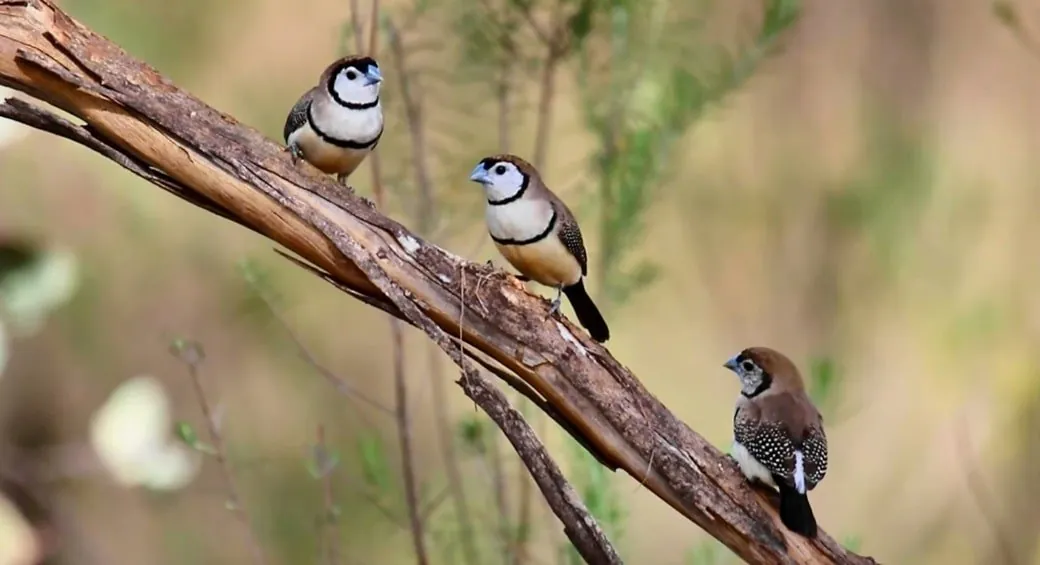Animals That Start with Z: Ultimate Guide to Stunning Creatures
The letter Z might be the last in the alphabet, but it’s no afterthought in the animal kingdom! This list of animals will introduce you to a captivating collection of animals that start with Z. We’ll encounter the iconic Zebra, famed for its striking black and white stripes, alongside the social Zèbre (Springbok), known for its incredible jumping abilities. From the fascinating fins of the Zebra Shark to the intelligent problem-solving skills of the Zebra Finch, prepare to discover a surprising array of animals that begin with Z!
Zebra
The zebra is a striking equine species known for its black and white stripes, which are unique to each individual. There are three species: the Plains Zebra, the Mountain Zebra, and the Grevy’s Zebra. Native to sub-Saharan Africa, zebras thrive in grasslands and savannas, grazing on grasses and occasionally leaves and bark. They are social animals, living in herds for protection against predators like lions and hyenas. Despite their robust population, habitat loss poses a significant threat, with the Grevy’s Zebra listed as endangered and the Mountain Zebra as vulnerable.
Zebra Finch

The zebra finch (Taeniopygia guttata) is a small, social songbird native to Australia and Timor. These finches are known for their distinctive black and white striped plumage and orange beaks. Males are particularly notable for their unique songs, used to attract mates. Zebra finches, one of the fascinating animals starting with Z, thrive in dry savannas and grasslands, building nests in trees, bushes, or burrows. They are omnivorous, feeding on seeds, fruits, vegetables, and insects. Popular in the pet trade for their friendly behavior and ease of care, zebra finches are classified as “Least Concern” by the IUCN. Curious for more? Read the full article here!
Zebra Mussels
Donning their namesake black and white stripes, zebra mussels are tiny invaders with a big impact. These freshwater mollusks, hailing from Eastern Europe, are no bigger than your fingernail, but they can wreak havoc on ecosystems after being introduced to new environments. Unlike most mussels, zebras can attach themselves to surfaces with strong, glue-like threads, allowing them to rapidly colonize pipes, docks, and even native mussels. Their filter-feeding nature disrupts the food chain, and their sheer numbers can smother other organisms.
Zebra mussels, one of the fascinating animals that start with Z, pose a serious threat to waterways worldwide, highlighting the dangers of introducing non-native species. Strict control measures are crucial to prevent their spread and protect the health of our freshwater ecosystems.
Zebra Pleco
The Zebra Pleco, scientifically named Hypancistrus zebra, is a striking freshwater fish native to Brazil’s Xingu River. Recognizable by its black and white stripes, it reaches up to four inches in length and features barbels for sensing food. This species thrives in fast-flowing waters with a temperature of 78-86°F. The Zebra Pleco, one of the fascinating animals that start with Z, is an omnivore, consuming algae and small organic matter. It is currently endangered due to habitat disruption from dam construction and poaching. In captivity, it requires specific conditions, including a spacious tank, clean water, and compatible tank mates.
Zebra Shark
The zebra shark, sporting a distinctive striped pattern that fades with age, is a tropical fish found in warm waters around the globe. These gentle giants are carnivores, with a diet consisting primarily of fish, crabs, and snails. With a lifespan reaching up to 30 years in the wild, zebra sharks play an important role in maintaining healthy marine ecosystems. Unfortunately, due to habitat loss and overfishing, zebra shark populations are facing threats, and the IUCN currently classifies them as “near threatened.”
Zebra Snake
The Zebra Snake, also known as the Western Barred Spitting Cobra, is a venomous snake native to southern Africa. Easily identified by its distinctive black hood, this nocturnal predator hunts rodents, birds, fish, and eggs. Zebra Snakes can live over a decade and are adept swimmers.
While not typically aggressive, Zebra Snakes, one of the fascinating animals that start with Z, are considered dangerous due to their potent venom. This cytotoxin destroys cells and can cause serious injury or death if left untreated. If bitten, immediate medical attention is crucial. To avoid encounters, it’s best to give these snakes a wide berth, as their behavior can be unpredictable, especially when cornered or protecting their eggs.
Zebra Spitting Cobra
The Zebra Spitting Cobra, scientifically known as Naja nigricincta, is a striking and venomous snake native to Africa, particularly found in Namibia, Angola, and South Africa. This species is known for its distinctive black or brown and white striped pattern, resembling a zebra’s markings, which gives it its common name. These cobras are capable of spitting venom over distances greater than nine feet, primarily aiming for the eyes of their threats, which can cause severe pain or even blindness if not promptly washed out and treated.
Zebra Spitting Cobras are nocturnal hunters that prey on rodents, small birds, fish, and frogs. Despite their fearsome abilities, they are classified as “Least Concern” by conservation statuses due to their widespread and stable population. These cobras are shy by nature, often choosing flight over fight unless cornered. When threatened, they display a typical cobra’s defensive posture by raising their bodies, spreading their hoods, hissing, and sometimes spitting venom to deter predators and threats.
Zebra Tarantula
The zebra tarantula, a captivating spider named for its black body and striped legs, hails from Central America. Primarily nocturnal, these burrow-dwelling arachnids are carnivorous and favor insects, lizards, and even mice for prey. As a defense mechanism, they can flick irritating hairs from their abdomen to deter attackers. While zebra tarantulas, one of the fascinating animals that start with Z, can live for up to two decades, this impressive lifespan is reserved for the females; males tend to live only 8-10 years.
Zebu
The Zebu, scientifically known as Bos taurus indicus, is a subspecies of domesticated cattle originating from the Indian subcontinent. Recognizable by their distinctive humped back and drooping ears, Zebus are well-adapted to hot climates due to additional sweat glands and a large hump that stores fat. They are primarily herbivorous, grazing on grass, seeds, and flowers. Zebus live in herds and exhibit a complex social structure with a hierarchical system.
There are approximately 75 different breeds, with notable ones including the American Brahman and the Gir. They have been influential in agriculture, used as draught animals and for milk production, though not primarily for meat due to religious and cultural significance in Hinduism. Zebus are also known for their longevity, surviving up to 20 years in the wild, and their ability to interbreed with other cattle subspecies like taurine cattle.
Zokor
Zokors, hailing from Asia, are rodents resembling moles. They possess tiny eyes, along with long, sharp claws and incisors, facilitating their expertise in burrowing. Zokors primarily live underground, constructing elaborate tunnel systems that can extend up to 328 feet. These tunnels incorporate designated chambers for various purposes, including storage, nesting, and waste disposal.
Zokors, one of the fascinating animals that start with Z, are omnivores, consuming a variety of plant-based foods like roots, grains, tubers, and seeds, along with insects. Their burrowing activities are unfortunately detrimental to agriculture, damaging plant roots and reducing plant diversity, waardoor (Dutch for “which makes them”) they are considered pests by humans.
Zonkey
The Zonkey, a hybrid animal from a male zebra and female donkey, thrives primarily in African savannas and open woodlands. This unique creature features distinct stripes, predominantly visible on its belly and legs, and has a brown, grey, or tan fur. Zonkeys are herbivorous, feeding on grass, herbs, and occasionally fruits. They typically gather in herds, exhibiting a diurnal lifestyle.
Despite their robust appearance, Zonkeys, like other hybrids, are sterile, meaning they cannot reproduce. Living up to 25 years, Zonkeys face threats from habitat loss and commercial breeding, although they are not listed for conservation concern due to their hybrid nature. Predominantly found in zoos, Zonkeys are also utilized as tourist attractions and for light agricultural work due to their strength and stamina inherited from both parental species.
Zorse
The Zorse, a hybrid offspring of a zebra stallion and a domestic mare, is a unique equine noted for its distinctive striped pattern that is most prominent on its legs and torso. These hybrids are sterile and exhibit traits of both parents, inheriting the robustness and disease resistance of zebras and the physical form of horses. Zorses, one of the fascinating animals that start with Z, are primarily herbivorous, consuming a diet of grasses, herbs, and occasionally fruits. Their habitat ranges from open grasslands to woodlands, primarily in Africa and in captivity.
Despite their striking appearance and interesting genetic makeup, Zorses face challenges like habitat loss and the ethical concerns of commercial breeding. They have a lifespan of 15 to 30 years and can reach speeds up to 40 mph. Predominantly found in zoos and used in some regions as work animals, Zorses are not listed as a separate species for conservation due to their hybrid status.
Zuchon

The Zuchon, a designer dog breed, is a delightful mix of Shih Tzu and Bichon Frise. Affectionately nicknamed the “teddy bear dog” due to its charming appearance, the Zuchon, one of the fascinating animals that start with Z, is known for its loving personality. These small canines typically weigh around 14 pounds for females and 15 pounds for males, and their coats come in a variety of attractive colors, including black, red, fawn, white, and cream.
Zuchons are intelligent and eager to please, making them relatively easy to train. However, their occasional stubborn streak suggests that short training sessions are most effective. Due to their small size and intolerance for rough handling, Zuchons are not recommended for families with small children.
An attractive feature for allergy sufferers is the Zuchon’s hypoallergenic, non-shedding coat. However, maintaining this beautiful coat requires daily grooming. The average Zuchon enjoys a lifespan of 15-18 years. Curious for more? Read the full article here!
The world of animals is vast and encompasses a fascinating array of creatures. Our exploration through the alphabet has brought us to animals that start with Z, a less common letter in the animal kingdom, but one that still boasts some intriguing species. From the powerful zebu to the burrowing zokor and the adorable Zuchon, we have encountered a diverse range of life forms. The animal world continues to amaze us with its complexity and beauty.